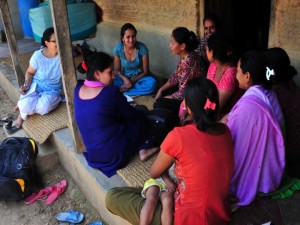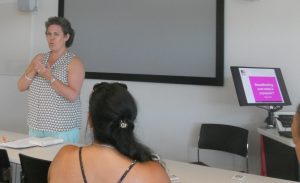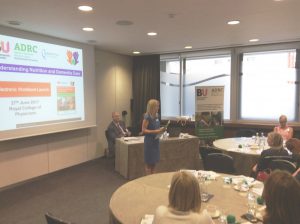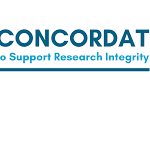 This month has been exceptionally good for BU publications in the field of midwifery and maternity care. Two PhD students has their articles published in international academic journals, one member of staff had a textbook chapter published, an interdisciplinary team has been accepted for publication in the British Journal of Midwifery, and a member of the Centre for Midwifery, Maternal & Perinatal Health (CMMPH) co-authored this month’s editorial in the Journal of Asian Midwives as well as an epidemiology paper on the HPV (Human Papilloma Virus) in Nepal.
This month has been exceptionally good for BU publications in the field of midwifery and maternity care. Two PhD students has their articles published in international academic journals, one member of staff had a textbook chapter published, an interdisciplinary team has been accepted for publication in the British Journal of Midwifery, and a member of the Centre for Midwifery, Maternal & Perinatal Health (CMMPH) co-authored this month’s editorial in the Journal of Asian Midwives as well as an epidemiology paper on the HPV (Human Papilloma Virus) in Nepal. 
The first of this success story was CMMP PhD student Preeti Mahato whose her latest paper ‘Factors related to choice of place of birth in a district in Nepal’ appeared in the Elsevier journal Sexual & Reproductive Healthcare [1]. The second PhD paper was also based on research in Nepal this time by Sheetal Sharma whose paper ‘Evaluation a Community Maternal Health Programme: Lessons Learnt’ appeared in Journal of Asian Midwives [2]. The textbook chapter was by Dr. Jenny Hall who contributed a chapter to the latest edition of Mayes Midwifery , which is the classic midwifery textbook and now in its 15th edition [3]. The interdisciplinary paper is by Angela Warren, service user and carer coordinator PIER partnership, Dr Mel Hughes, principal academic in social work, academic lead for PIER partnership, and Dr Jane Fry and Dr Luisa Cescutti-Butler who are both senior lecturers in midwifery in the Centre for Midwifery, Maternal & Perinatal Health (CMMPH) [4]. The latest issue of the Nepal Journal of Epidemiology carried a CMMPH co-authored paper on the HPV in young women in Nepal [5]. The final piece, an editorial, appeared yesterday in the latest issue of the Journal of Asian Midwives [6].

Congratulations to all authors!
Prof. Edwin van Teijlingen
CMMPH
References:
- Mahato, P., van Teijlingen, E., Simkhada, P., Sheppard, Z., Silwal, R.C. (2017) Factors related to choice of place of birth in a district in Nepal, Sexual & Reproductive Healthcare 13 : 91-96.
- Sharma, S., Simkhada, P., Hundley, V., van Teijlingen, E., Stephens, J., Silwal, R.C., Angell, C. (2017) Evaluation a Community Maternal Health Programme: Lessons Learnt. Journal of Asian Midwives. 4 (1): 3–20.
- Hall, J. (2017) ‘Fertility and it’s control’ In: Macdonald, S. & Johnson, G. Mayes’ Midwifery, 15th Edition, London: Elsevier.
- Warren, A., Hughes, M., Fry, J., Cescutti-Butler, L. (2017) ‘Involvement in midwifery education: experiences from a university service user and carer partnership’ British Journal of Midwifery (forthcoming).
- Sathian, B., Babu, MGR., van Teijlingen, E.R., Banerjee, I., Subramanya, H.S., Roy, B., Subramanya, H., Rajesh, E., Devkota, S. (2017) Ethnic variation in perception of Human Papillomavirus and its Vaccination among young women in Nepal, Nepal Journal of Epidemiology 7 (1): 647-658. http://www.nepjol.info/index.php/NJE/article/view/17757
- Jan, R., van Teijlingen, E. (2017) Exciting Times in South-Asian Midwifery, Journal of Asian Midwives 4 (1):1





 Trust Repair team has delivered a successful Festival of Learning 2017 event on 11 July titled
Trust Repair team has delivered a successful Festival of Learning 2017 event on 11 July titled 





































 New Nepal scoping review on maternal & neonatal health
New Nepal scoping review on maternal & neonatal health Fourth INRC Symposium: From Clinical Applications to Neuro-Inspired Computation
Fourth INRC Symposium: From Clinical Applications to Neuro-Inspired Computation Writing policy briefs
Writing policy briefs Upholding Excellence: The Concordat to Support Research Integrity
Upholding Excellence: The Concordat to Support Research Integrity ECR Funding Open Call: Research Culture & Community Grant – Application Deadline Friday 12 December
ECR Funding Open Call: Research Culture & Community Grant – Application Deadline Friday 12 December MSCA Postdoctoral Fellowships 2025 Call
MSCA Postdoctoral Fellowships 2025 Call ERC Advanced Grant 2025 Webinar
ERC Advanced Grant 2025 Webinar Horizon Europe Work Programme 2025 Published
Horizon Europe Work Programme 2025 Published Horizon Europe 2025 Work Programme pre-Published
Horizon Europe 2025 Work Programme pre-Published Update on UKRO services
Update on UKRO services European research project exploring use of ‘virtual twins’ to better manage metabolic associated fatty liver disease
European research project exploring use of ‘virtual twins’ to better manage metabolic associated fatty liver disease